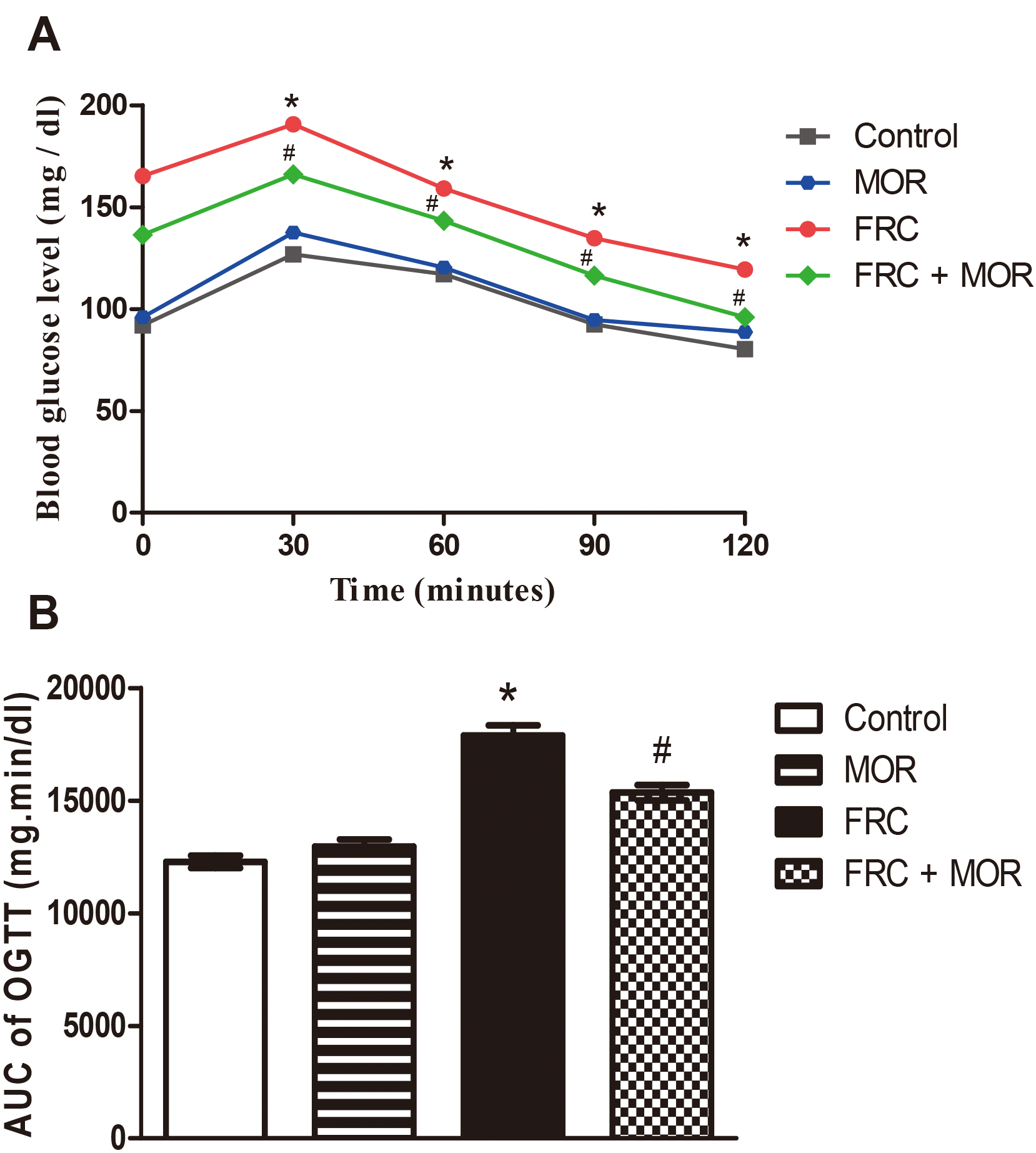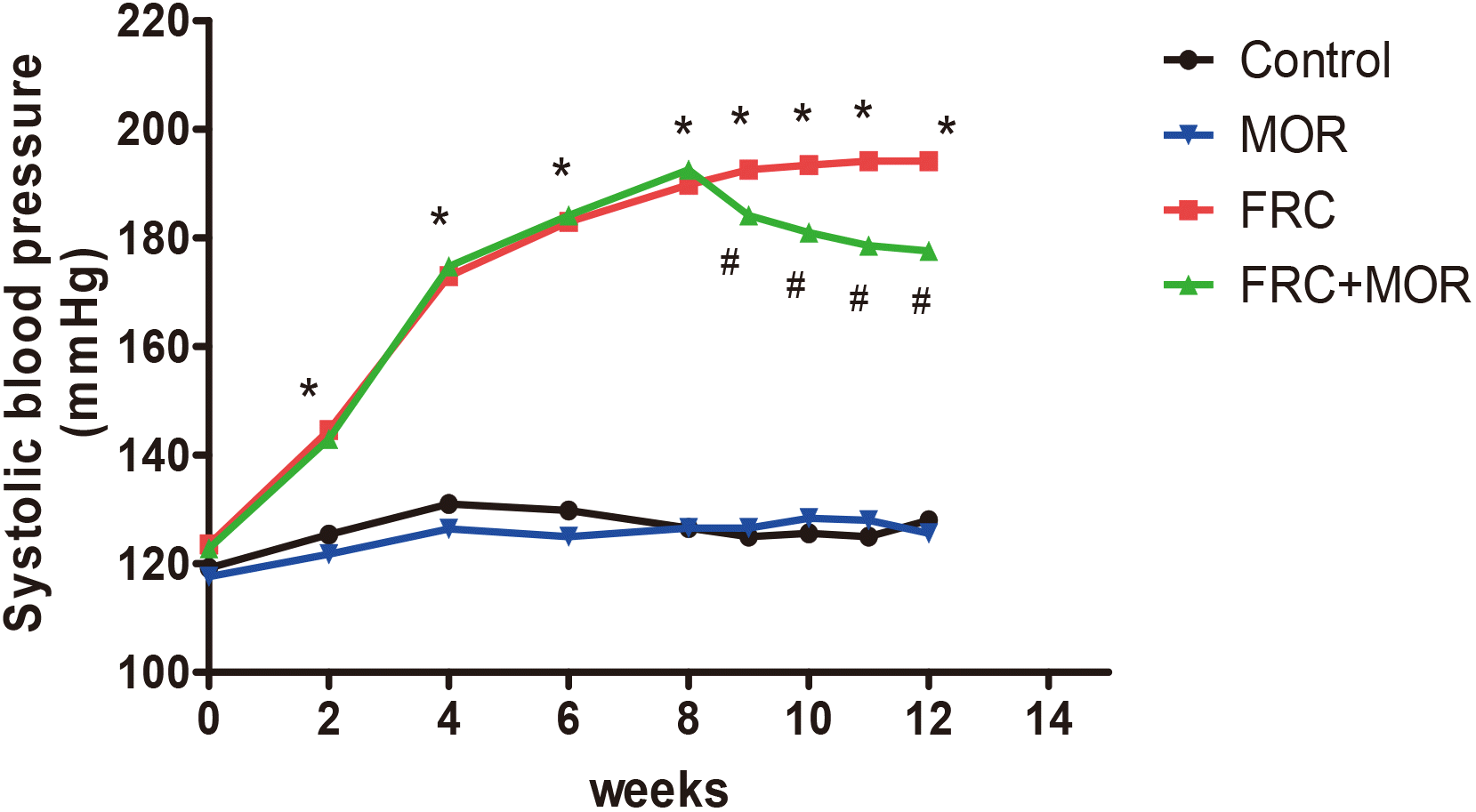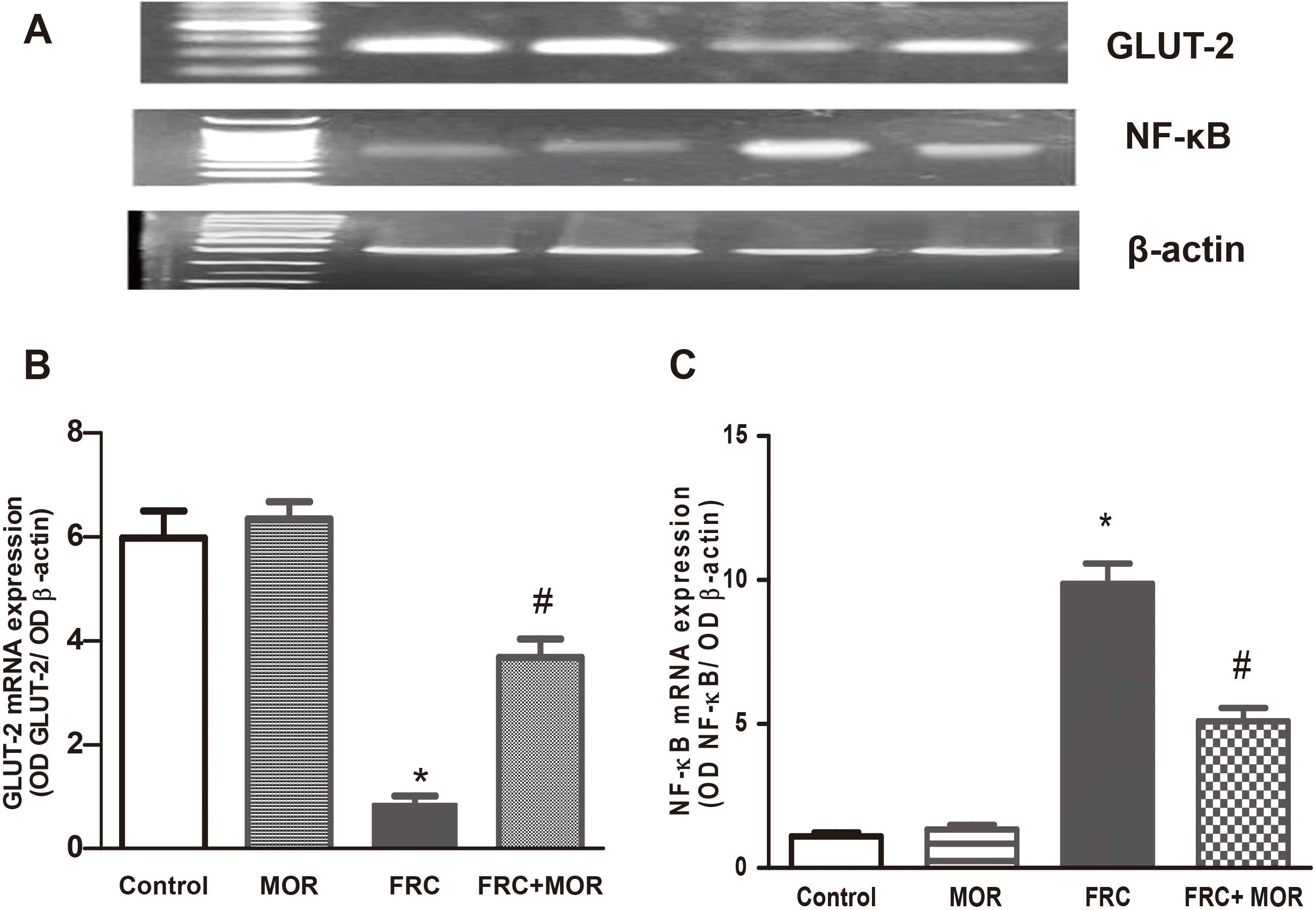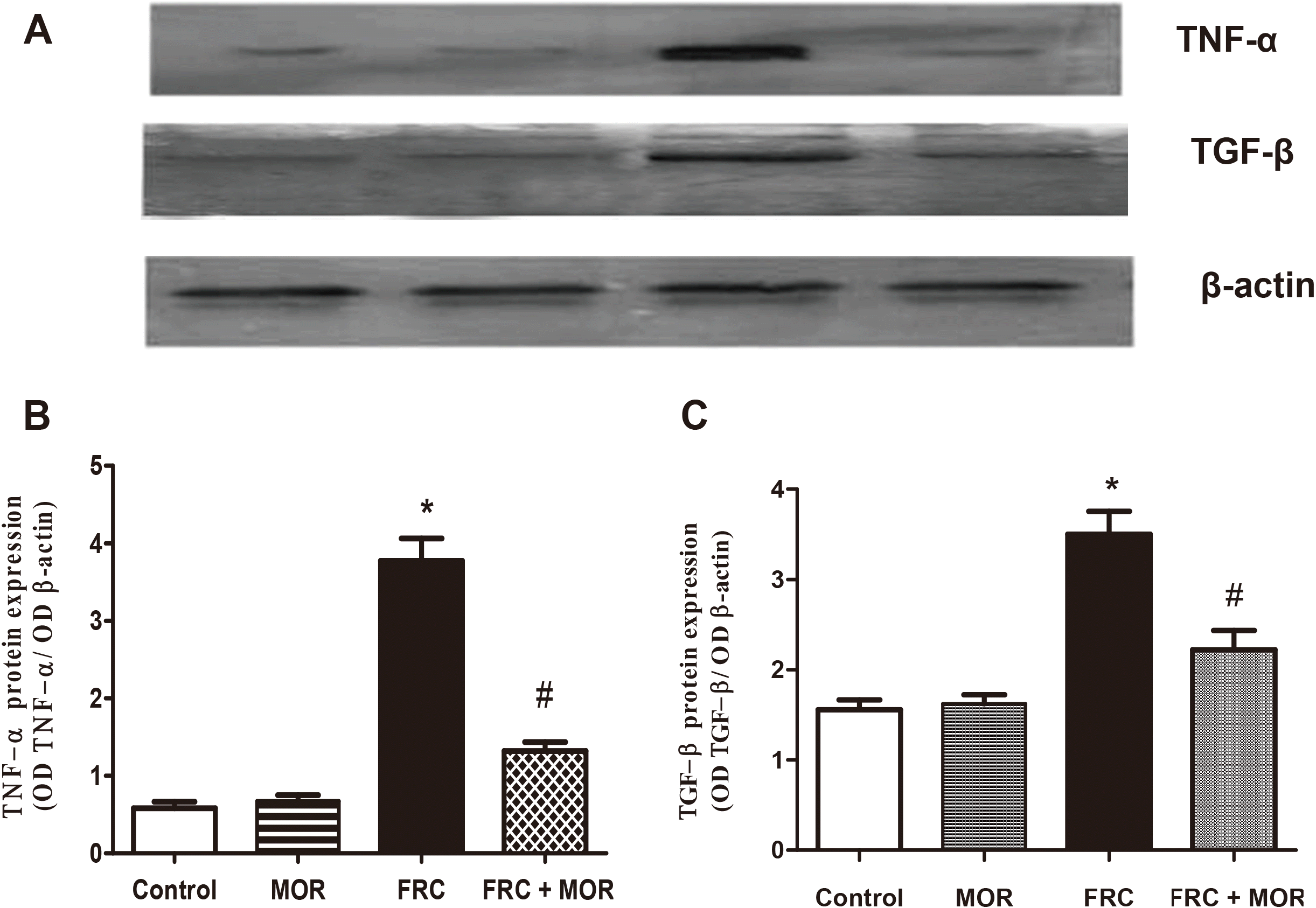1. Bray GA, Nielsen SJ, Popkin BM. 2004; Consumption of high-fructose corn syrup in beverages may play a role in the epidemic of obesity. Am J Clin Nutr. 79:537–543. DOI:
10.1093/ajcn/79.4.537. PMID:
15051594.


2. Sánchez-Lozada LG, Tapia E, Jiménez A, Bautista P, Cristóbal M, Nepomuceno T, Soto V, Avila-Casado C, Nakagawa T, Johnson RJ, Herrera-Acosta J, Franco M. 2007; Fructose-induced metabolic syndrome is associated with glomerular hypertension and renal microvascular damage in rats. Am J Physiol Renal Physiol. 292:F423–F429. DOI:
10.1152/ajprenal.00124.2006. PMID:
16940562.

3. Kelishadi R, Mansourian M, Heidari-Beni M. 2014; Association of fructose consumption and components of metabolic syndrome in human studies: a systematic review and meta-analysis. Nutrition. 30:503–510. DOI:
10.1016/j.nut.2013.08.014. PMID:
24698343.


4. Sabir AA, Bilbis LS, Saidu Y, Jimoh A, Iwuala SO, Isezuo SA, Kaoje AU, Abubakar SA. 2016; Oxidative stress among subjects with metabolic syndrome in Sokoto, North-Western Nigeria. Niger J Clin Pract. 19:128–132. DOI:
10.4103/1119-3077.173705. PMID:
26755231.


5. Lorenzo C, Okoloise M, Williams K, Stern MP, Haffner SM. 2003; The metabolic syndrome as predictor of type 2 diabetes: the San Antonio heart study. Diabetes Care. 26:3153–3159. DOI:
10.2337/diacare.26.11.3153. PMID:
14578254.


6. Maki KC. 2004; Dietary factors in the prevention of diabetes mellitus and coronary artery disease associated with the metabolic syndrome. Am J Cardiol. 93(11A):12C–17C. DOI:
10.1016/j.amjcard.2004.02.001. PMID:
15178512.

7. Sivaramakrishnan V, Devaraj SN. 2010; Morin fosters apoptosis in experimental hepatocellular carcinogenesis model. Chem Biol Interact. 183:284–292. DOI:
10.1016/j.cbi.2009.11.011. PMID:
19931519.


8. Zhang R, Kang KA, Kang SS, Park JW, Hyun JW. 2011; Morin (2',3, 4',5,7-pentahydroxyflavone) protected cells against γ-radiation-induced oxidative stress. Basic Clin Pharmacol Toxicol. 108:63–72. DOI:
10.1111/j.1742-7843.2010.00629.x. PMID:
20807219.

9. Al Numair KS, Chandramohan G, Alsaif MA, Baskar AA. 2012; Protective effect of morin on cardiac mitochondrial function during isoproterenol-induced myocardial infarction in male Wistar rats. Redox Rep. 17:14–21. DOI:
10.1179/1351000211Y.0000000019. PMID:
22340511. PMCID:
PMC6837627.


11. Marunaka Y, Marunaka R, Sun H, Yamamoto T, Kanamura N, Inui T, Taruno A. 2017; Actions of quercetin, a polyphenol, on blood pressure. Molecules. 22:209. DOI:
10.3390/molecules22020209. PMID:
28146071. PMCID:
PMC6155806.


12. Choudhury A, Chakraborty I, Banerjee TS, Vana DR, Adapa D. 2017; Efficacy of morin as a potential therapeutic phytocomponent: insights into the mechanism of action. Int J Med Res Health Sci. 6:175–194.
13. Lotito SB, Frei B. 2006; Consumption of flavonoid-rich foods and increased plasma antioxidant capacity in humans: cause, consequence, or epiphenomenon? Free Radic Biol Med. 41:1727–1746. DOI:
10.1016/j.freeradbiomed.2006.04.033. PMID:
17157175.


14. Cho YM, Onodera H, Ueda M, Imai T, Hirose M. 2006; A 13-week subchronic toxicity study of dietary administered morin in F344 rats. Food Chem Toxicol. 44:891–897. DOI:
10.1016/j.fct.2005.12.002. PMID:
16442199.


16. Al-Numair KS, Chandramohan G, Alsaif MA, Veeramani C, El Newehy AS. 2014; Morin, a flavonoid, on lipid peroxidation and antioxidant status in experimental myocardial ischemic rats. Afr J Tradit Complement Altern Med. 11:14–20. DOI:
10.4314/ajtcam.v11i3.3. PMID:
25371558. PMCID:
PMC4202414.

17. Rehman MU, Rashid SM, Rasool S, Shakeel S, Ahmad B, Ahmad SB, Madkhali H, Ganaie MA, Majid S, Bhat SA. 2019; Zingerone (4-(4-hydroxy-3-methylphenyl)butan-2-one) ameliorates renal function via controlling oxidative burst and inflammation in experimental diabetic nephropathy. Arch Physiol Biochem. 125:201–209. DOI:
10.1080/13813455.2018.1448422. PMID:
29537332.


18. Heeba GH, Mahmoud ME. 2014; Therapeutic potential of morin against liver fibrosis in rats: modulation of oxidative stress, cytokine production and nuclear factor kappa B. Environ Toxicol Pharmacol. 37:662–671. DOI:
10.1016/j.etap.2014.01.026. PMID:
24583409.


19. Tveden-Nyborg P, Bergmann TK, Lykkesfeldt J. 2018; Basic & Clinical Pharmacology & Toxicology policy for experimental and clinical studies. Basic Clin Pharmacol Toxicol. 123:233–235. DOI:
10.1111/bcpt.13059. PMID:
29931751.
20. Botezelli JD, Cambri LT, Ghezzi AC, Dalia RA, Voltarelli FA, de Mello MA. 2012; Fructose-rich diet leads to reduced aerobic capacity and to liver injury in rats. Lipids Health Dis. 11:78. DOI:
10.1186/1476-511X-11-78. PMID:
22713601. PMCID:
PMC3473252.



21. Ola MS, Aleisa AM, Al-Rejaie SS, Abuohashish HM, Parmar MY, Alhomida AS, Ahmed MM. 2014; Flavonoid, morin inhibits oxidative stress, inflammation and enhances neurotrophic support in the brain of streptozotocin-induced diabetic rats. Neurol Sci. 35:1003–1008. DOI:
10.1007/s10072-014-1628-5. PMID:
24413816.


22. Naderali EK, Williams G. 2003; Prolonged endothelial-dependent and -independent arterial dysfunction induced in the rat by short-term feeding with a high-fat, high-sucrose diet. Atherosclerosis. 166:253–259. DOI:
10.1016/S0021-9150(02)00367-2. PMID:
12535737.


23. Matthews DR, Hosker JP, Rudenski AS, Naylor BA, Treacher DF, Turner RC. 1985; Homeostasis model assessment: insulin resistance and beta-cell function from fasting plasma glucose and insulin concentrations in man. Diabetologia. 28:412–419. DOI:
10.1007/BF00280883. PMID:
3899825.

24. Friedewald WT, Levy RI, Fredrickson DS. 1972; Estimation of the concentration of low-density lipoprotein cholesterol in plasma, without use of the preparative ultracentrifuge. Clin Chem. 18:499–502. DOI:
10.1093/clinchem/18.6.499. PMID:
4337382.


25. Ohkawa H, Ohishi N, Yagi K. 1979; Assay for lipid peroxides in animal tissues by thiobarbituric acid reaction. Anal Biochem. 95:351–358. DOI:
10.1016/0003-2697(79)90738-3. PMID:
36810.


26. Sastry KV, Moudgal RP, Mohan J, Tyagi JS, Rao GS. 2002; Spectrophotometric determination of serum nitrite and nitrate by copper-cadmium alloy. Anal Biochem. 306:79–82. DOI:
10.1006/abio.2002.5676. PMID:
12069417.


27. Beutler E, Duron O, Kelly BM. 1963; Improved method for the determination of blood glutathione. J Lab Clin Med. 61:882–888. PMID:
13967893.

28. Johnson RJ, Segal MS, Sautin Y, Nakagawa T, Feig DI, Kang DH, Gersch MS, Benner S, Sánchez-Lozada LG. 2007; Potential role of sugar (fructose) in the epidemic of hypertension, obesity and the metabolic syndrome, diabetes, kidney disease, and cardiovascular disease. Am J Clin Nutr. 86:899–906. DOI:
10.1093/ajcn/86.4.899. PMID:
17921363.

29. Ma Y, Ge A, Zhu W, Liu YN, Ji NF, Zha WJ, Zhang JX, Zeng XN, Huang M. 2016; Morin attenuates ovalbumin-induced airway inflammation by modulating oxidative stress-responsive MAPK signaling. Oxid Med Cell Longev. 2016:5843672. DOI:
10.1155/2016/5843672. PMID:
26783416. PMCID:
PMC4691473.

30. Abuohashish HM, Al-Rejaie SS, Al-Hosaini KA, Parmar MY, Ahmed MM. 2013; Alleviating effects of morin against experimentally-induced diabetic osteopenia. Diabetol Metab Syndr. 5:5. DOI:
10.1186/1758-5996-5-5. PMID:
23384060. PMCID:
PMC3582624.



31. Carrier A. 2017; Metabolic syndrome and oxidative stress: a complex relationship. Antioxid Redox Signal. 26:429–431. DOI:
10.1089/ars.2016.6929. PMID:
27796142.

33. Wu TW, Zeng LH, Wu J, Fung KP. 1993; Morin hydrate is a plant-derived and antioxidant-based hepatoprotector. Life Sci. 53:PL213–PL218. DOI:
10.1016/0024-3205(93)90266-6. PMID:
8366767.

35. Degenhardt K, Mathew R, Beaudoin B, Bray K, Anderson D, Chen G, Mukherjee C, Shi Y, Gélinas C, Fan Y, Nelson DA, Jin S, White E. 2006; Autophagy promotes tumor cell survival and restricts necrosis, inflammation, and tumorigenesis. Cancer Cell. 10:51–64. DOI:
10.1016/j.ccr.2006.06.001. PMID:
16843265. PMCID:
PMC2857533.



36. Liang C, E X, Jung JU. 2008; Downregulation of autophagy by herpesvirus Bcl-2 homologs. Autophagy. 4:268–272. DOI:
10.4161/auto.5210. PMID:
17993780.


37. Lim J, Ali ZM, Sanders RA, Snyder AC, Eells JT, Henshel DS, Watkins JB 3rd. 2009; Effects of low-level light therapy on hepatic antioxidant defense in acute and chronic diabetic rats. J Biochem Mol Toxicol. 23:1–8. DOI:
10.1002/jbt.20257. PMID:
19202557.


38. MadanKumar P, NaveenKumar P, Devaraj H, NiranjaliDevaraj S. 2015; Morin, a dietary flavonoid, exhibits anti-fibrotic effect and induces apoptosis of activated hepatic stellate cells by suppressing canonical NF-κB signaling. Biochimie. 110:107–118. DOI:
10.1016/j.biochi.2015.01.002. PMID:
25577997.


39. Uchiyama S, Shimizu T, Shirasawa T. 2006; CuZn-SOD deficiency causes ApoB degradation and induces hepatic lipid accumulation by impaired lipoprotein secretion in mice. J Biol Chem. 281:31713–31719. DOI:
10.1016/S0021-9258(19)84085-1. PMID:
16921198.


40. K V A, Madhana RM, Kasala ER, Samudrala PK, Lahkar M, Gogoi R. 2016; Morin hydrate mitigates cisplatin-induced renal and hepatic injury by impeding oxidative/nitrosative stress and inflammation in mice. J Biochem Mol Toxicol. 30:571–579. DOI:
10.1002/jbt.21817. PMID:
27111570.


41. Kang DG, Moon MK, Sohn EJ, Lee DH, Lee HS. 2004; Effects of morin on blood pressure and metabolic changes in fructose-induced hypertensive rats. Biol Pharm Bull. 27:1779–1783. DOI:
10.1248/bpb.27.1779. PMID:
15516722.


42. Vanitha P, Uma C, Suganya N, Bhakkiyalakshmi E, Suriyanarayanan S, Gunasekaran P, Sivasubramanian S, Ramkumar KM. 2014; Modulatory effects of morin on hyperglycemia by attenuating the hepatic key enzymes of carbohydrate metabolism and β-cell function in streptozotocin-induced diabetic rats. Environ Toxicol Pharmacol. 37:326–335. DOI:
10.1016/j.etap.2013.11.017. PMID:
24384280.


43. Paoli P, Cirri P, Caselli A, Ranaldi F, Bruschi G, Santi A, Camici G. 2013; The insulin-mimetic effect of Morin: a promising molecule in diabetes treatment. Biochim Biophys Acta. 1830:3102–3111. DOI:
10.1016/j.bbagen.2013.01.017. PMID:
23352912.


44. Ghaffari MA, Mojab S. 2007; Influence of flavonols as in vitro on low density lipoprotein glycation. Iran Biomed J. 11:185–191. PMID:
18051779.
45. Naowaboot J, Wannasiri S, Pannangpetch P. 2016; Morin attenuates hepatic insulin resistance in high-fat-diet-induced obese mice. J Physiol Biochem. 72:269–280. DOI:
10.1007/s13105-016-0477-5. PMID:
26976296.


46. Zhang X, Han X, Zhang P, Zhou T, Chen Y, Jin J, Ma X. 2019; Morin attenuates oxidized low-density lipoprotein-mediated injury by inducing autophagy via activating AMPK signalling in HUVECs. Clin Exp Pharmacol Physiol. 46:1053–1060. DOI:
10.1111/1440-1681.13160. PMID:
31407376.

47. Khitan Z, Kim DH. 2013; Fructose: a key factor in the development of metabolic syndrome and hypertension. J Nutr Metab. 2013:682673. DOI:
10.1155/2013/682673. PMID:
23762544. PMCID:
PMC3677638.

48. Masai M, Fujioka Y, Fujiwara M, Morimoto S, Miyoshi A, Suzuki H, Iwasaki T. 2001; Activation of Na+/H+ exchanger is associated with hyperinsulinemia in borderline hypertensive rats. Eur J Clin Invest. 31:193–200. DOI:
10.1046/j.1365-2362.2001.00008.x. PMID:
11264645.


49. Prahalathan P, Kumar S, Raja B. 2012; Morin attenuates blood pressure and oxidative stress in deoxycorticosterone acetate-salt hypertensive rats: a biochemical and histopathological evaluation. Metabolism. 61:1087–1099. DOI:
10.1016/j.metabol.2011.12.012. PMID:
22386933.


50. Prahalathan P, Saravanakumar M, Raja B. 2012; The flavonoid morin restores blood pressure and lipid metabolism in DOCA-salt hypertensive rats. Redox Rep. 17:167–175. DOI:
10.1179/1351000212Y.0000000015. PMID:
22781105. PMCID:
PMC6837552.


51. Merwid-Ląd A, Trocha M, Chlebda-Sieragowska E, Sozański T, Szandruk M, Magdalan J, Ksiądzyna D, Pieśniewska M, Fereniec-Gołębiewska L, Kwiatkowska J, Szeląg A. 2014; The impact of morin, a natural flavonoid, on cyclophosphamide-induced changes in the oxidative stress parameters in rat livers. Adv Clin Exp Med. 23:505–509. DOI:
10.17219/acem/37213. PMID:
25166433.

52. Hajiaghaalipour F, Khalilpourfarshbafi M, Arya A. 2015; Modulation of glucose transporter protein by dietary flavonoids in type 2 diabetes mellitus. Int J Biol Sci. 11:508–524. DOI:
10.7150/ijbs.11241. PMID:
25892959. PMCID:
PMC4400383.



53. Cordero-Herrera I, Martín MA, Bravo L, Goya L, Ramos S. 2013; Cocoa flavonoids improve insulin signalling and modulate glucose production via AKT and AMPK in HepG2 cells. Mol Nutr Food Res. 57:974–985. DOI:
10.1002/mnfr.201200500. PMID:
23456781.


54. Cordero-Herrera I, Martín MÁ, Goya L, Ramos S. 2014; Cocoa flavonoids attenuate high glucose-induced insulin signalling blockade and modulate glucose uptake and production in human HepG2 cells. Food Chem Toxicol. 64:10–19. DOI:
10.1016/j.fct.2013.11.014. PMID:
24262486.


55. Arab HH, Al-Shorbagy MY, Abdallah DM, Nassar NN. 2014; Telmisartan attenuates colon inflammation, oxidative perturbations and apoptosis in a rat model of experimental inflammatory bowel disease. PLoS One. 9:e97193. DOI:
10.1371/journal.pone.0097193. PMID:
24831514. PMCID:
PMC4022743.

56. Lee HS, Jung KH, Park IS, Kwon SW, Lee DH, Hong SS. 2009; Protective effect of morin on dimethylnitrosamine-induced hepatic fibrosis in rats. Dig Dis Sci. 54:782–788. DOI:
10.1007/s10620-008-0404-x. PMID:
18629640.

57. Lee HS, Jung KH, Hong SW, Park IS, Lee C, Han HK, Lee DH, Hong SS. 2008; Morin protects acute liver damage by carbon tetrachloride (CCl(4)) in rat. Arch Pharm Res. 31:1160–1165. DOI:
10.1007/s12272-001-1283-5. PMID:
18806959.


58. Kim JM, Lee EK, Park G, Kim MK, Yokozawa T, Yu BP, Chung HY. 2010; Morin modulates the oxidative stress-induced NF-kappaB pathway through its anti-oxidant activity. Free Radic Res. 44:454–461. DOI:
10.3109/10715761003610737. PMID:
20187708.

59. Gupta SC, Tyagi AK, Deshmukh-Taskar P, Hinojosa M, Prasad S, Aggarwal BB. 2014; Downregulation of tumor necrosis factor and other proinflammatory biomarkers by polyphenols. Arch Biochem Biophys. 559:91–99. DOI:
10.1016/j.abb.2014.06.006. PMID:
24946050.











 PDF
PDF Citation
Citation Print
Print


 XML Download
XML Download